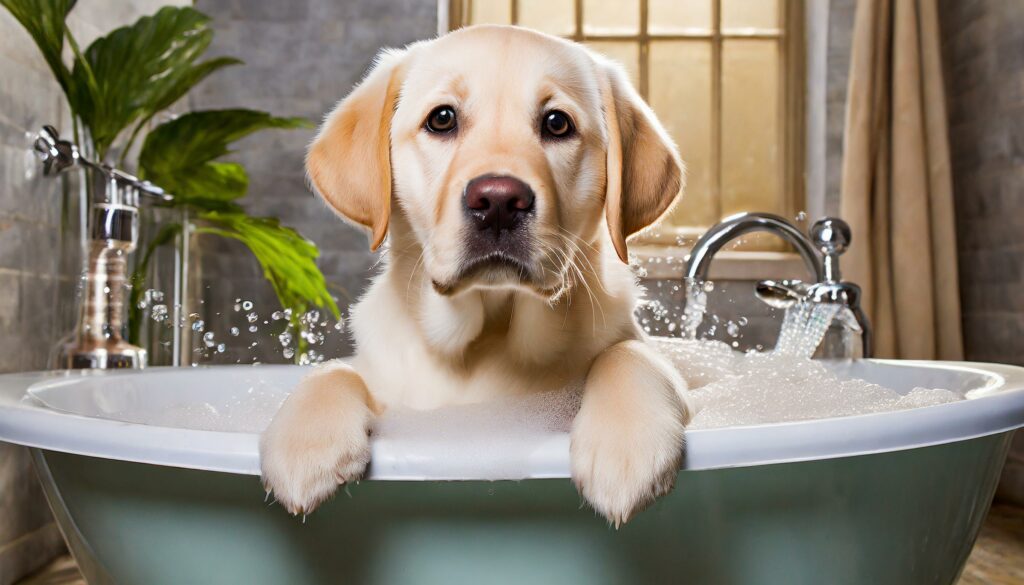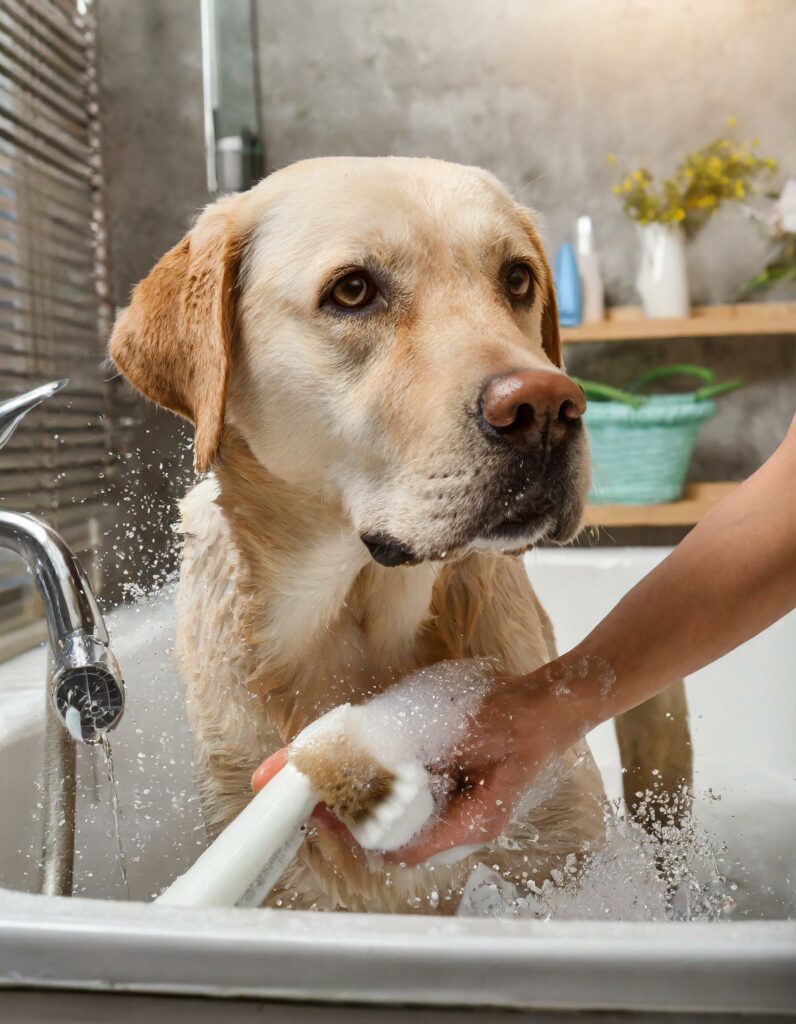Labrador Retrievers, affectionately known as Labs, are renowned for their friendly disposition and boundless energy, making them one of the most beloved dog breeds worldwide. For many Lab owners, one pressing concern is determining the ideal bathing frequency to keep their furry friend clean without harming their natural coat oils. This guide delves into whether monthly baths are beneficial for your Lab, considering various factors that influence their grooming needs.
Understanding Your Lab’s Needs
Labs are equipped with a distinctive double coat that includes a soft undercoat and a water-resistant outer coat. This natural design not only keeps them warm in winter but also cool in summer, while helping to repel water during their swimming adventures. The condition and maintenance of their coat directly impact their overall health and comfort. Therefore, understanding the specific needs of your Lab’s coat is the first step in establishing an effective grooming routine.
The Right Frequency of Bathing
The optimal bathing frequency for a Labrador Retriever can vary based on several factors. These include their level of outdoor activity, the environment in which they live, and their individual skin health. For example, a Lab that regularly swims in a lake may require more frequent baths to remove debris and prevent matting, whereas a mostly indoor Lab might not need baths as often.
Monthly Bathing Pros & Cons
Opting to bathe your Lab once a month can have its advantages. Regular baths help manage shedding, remove dirt, and keep your Lab smelling fresh. However, too frequent bathing can strip away essential oils from their coat, leading to dry, itchy skin. Therefore, if you choose a monthly bathing schedule, it’s crucial to use the right products and techniques to minimize any potential harm.

Preparing for a Bath
Before bathing your Lab, it’s important to gather all necessary supplies, including a dog-specific shampoo, towels, a brush, and possibly a conditioner if your dog’s coat is particularly dry or tangled. Ensure the bathing area is safe and non-slip, and that the water temperature is comfortably warm—not too hot or cold.
Choosing the Right Shampoo
The selection of shampoo can significantly affect the health of your Lab’s coat and skin. Look for products that are specifically formulated for dogs, as human shampoos may disrupt the pH balance of your dog’s skin. If your Lab has sensitive skin, consider a hypoallergenic or oatmeal-based shampoo to soothe and protect their skin.
Bathing Steps
When it comes time to actually bathe your Lab, follow these steps to ensure a thorough and stress-free experience:
- Thoroughly wet your dog’s coat with warm water.
- Apply dog shampoo, gently massaging it into the coat and skin, avoiding the eyes and ears.
- Rinse completely, making sure all soap is washed out to prevent irritation.
- If using conditioner, apply it post-shampoo, then rinse again thoroughly.
- Dry your dog with towels, and if they tolerate it, a hair dryer on a low, cool setting can be used.
After Bath Care

After bathing, it’s essential to properly dry your Lab. A good brushing helps detangle fur and spread natural oils throughout the coat, which can help reduce shedding and keep the coat shiny and healthy. Regular grooming sessions not only keep your Lab clean but also provide an opportunity to check for any signs of skin issues like redness or irritation.
Monitoring Skin Health
Keep an eye on your Lab’s skin and coat condition after baths. Signs of irritation, such as excessive scratching, redness, or bumps, should prompt a consultation with your veterinarian to determine if a change in your grooming products or frequency is needed.
When to Bathe More Frequently
Certain situations may require you to bathe your Lab more frequently than once a month. These can include excessively dirty coats from outdoor activities, accidental rolling in foul substances, or medical conditions like skin infections that necessitate medicinal baths as prescribed by a veterinarian.
Common Questions About Bathing Labs
Many Lab owners wonder about the best practices for keeping their pets clean without over-bathing. It’s important to balance cleanliness with the health of your dog’s skin and coat, using bathing as a tool to enhance their well-being rather than as a routine that could potentially cause harm.
Impact of Bathing on Lab’s Health
Regular, but not excessive, bathing is part of a holistic approach to pet care. It helps prevent issues like parasites and skin infections while making your pet more comfortable and easier to be around.
Alternative Grooming Methods
Besides bathing, other grooming practices can help maintain your Lab’s coat health. Regular brushing removes dead hair and distributes skin oils effectively. Also, using grooming wipes or dry shampoo can be a practical solution for quick clean-ups between baths.
Conclusion
In conclusion, bathing your Labrador Retriever once a month is a viable option for many owners, but it’s important to tailor this routine based on your specific pet’s needs and lifestyle. Always use the proper grooming products and follow up with adequate aftercare to ensure your Lab remains happy, healthy, and well-groomed.
